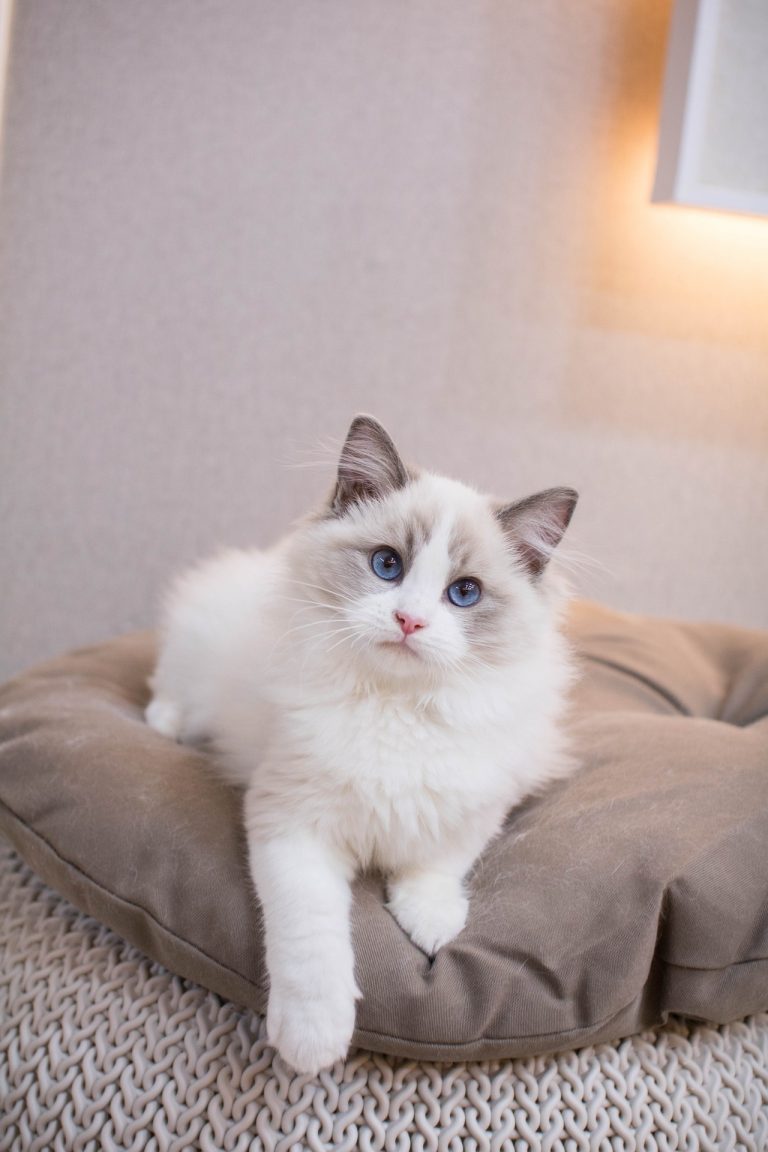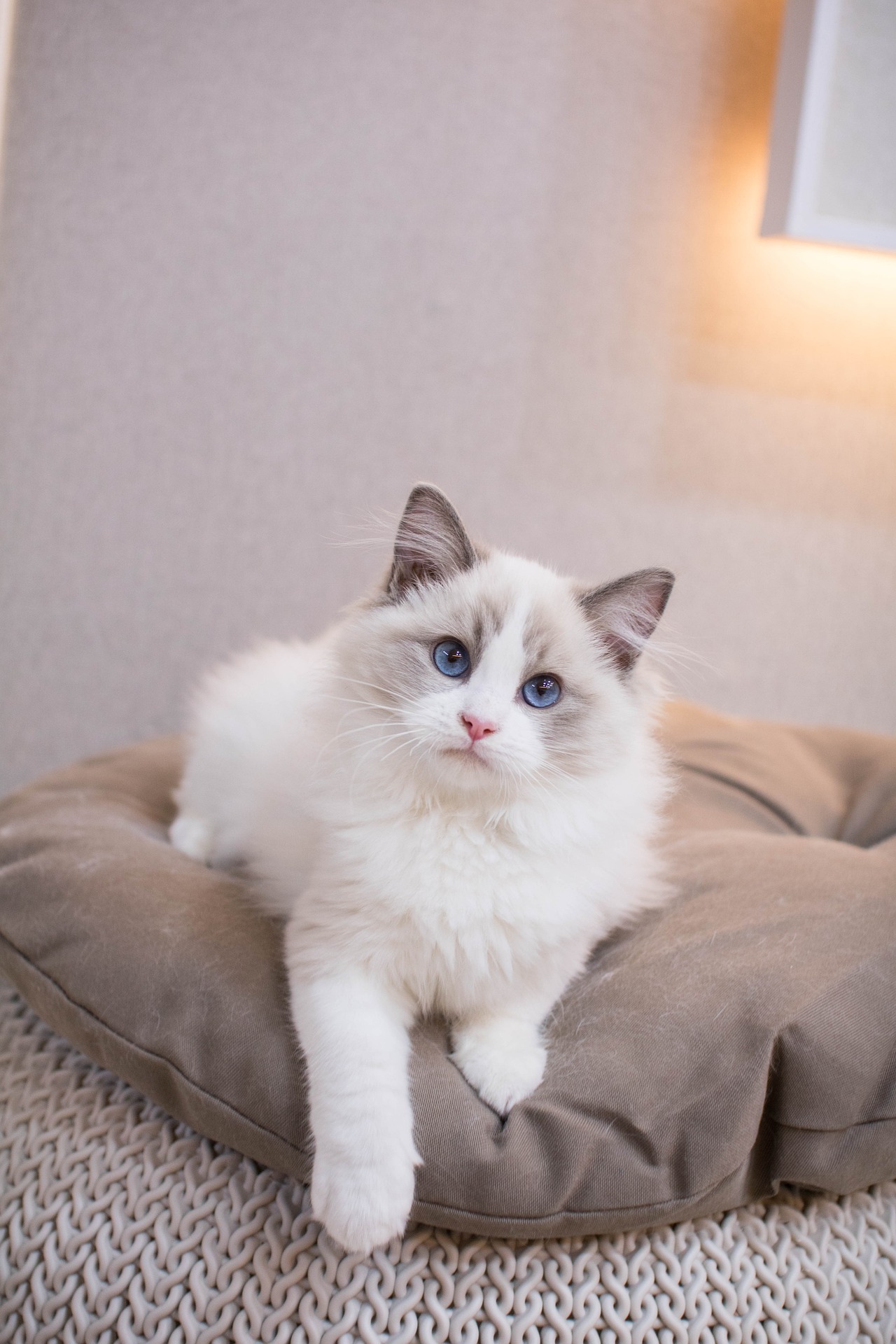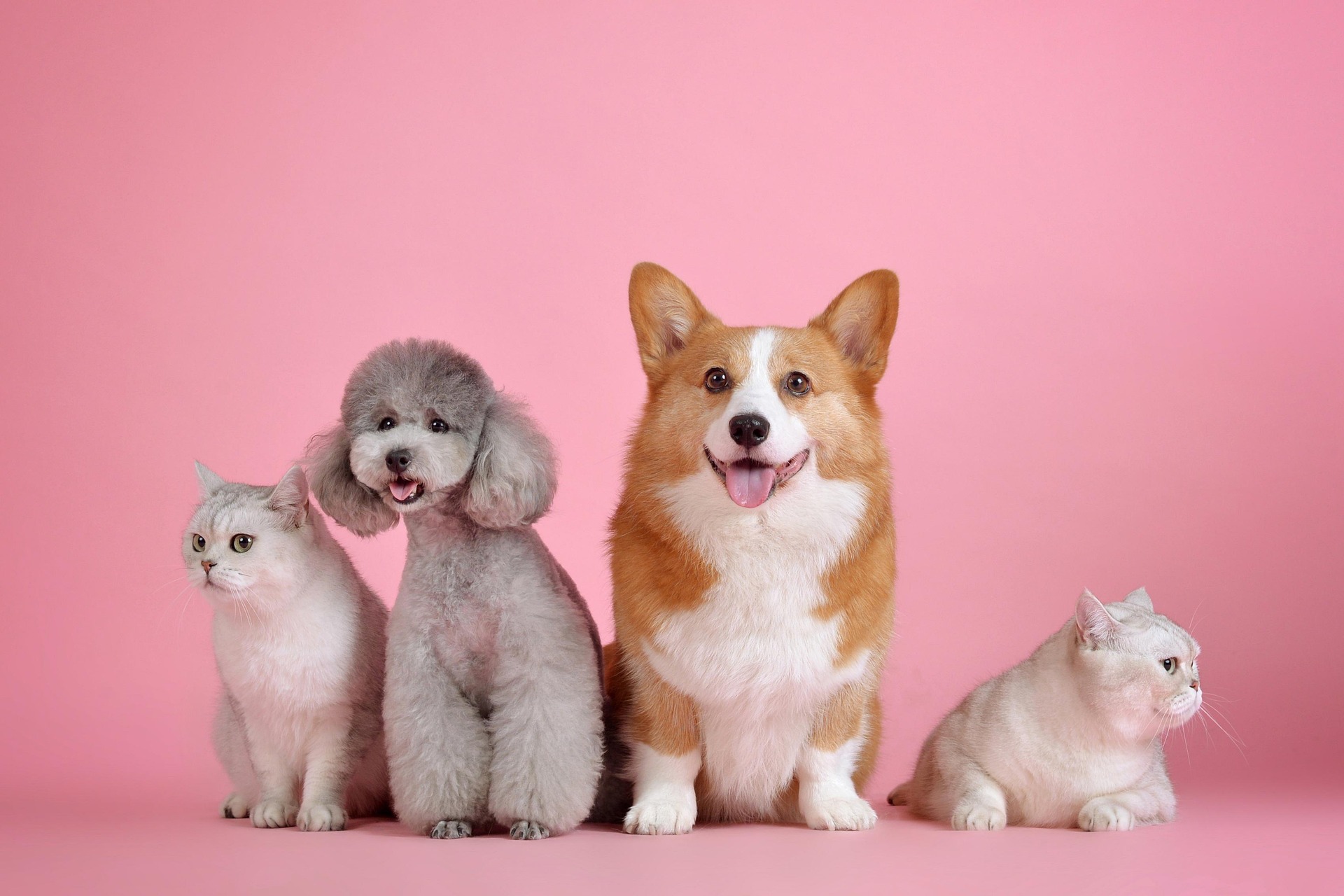You want a cat, but the choices feel endless. Every breed guide throws around terms like “high maintenance” and “experienced owners only.” Here’s some good news: Ragdoll cats break that pattern completely. These fluffy, oversized teddy bears practically train themselves while melting into your arms like butter.
Ragdolls got their name for a reason. Pick one up, and they’ll flop over like a rag doll in a child’s hands. This isn’t just cute behavior—it tells you everything about their personality. While other cats might scratch, hiss, or bolt when handled,Ragdolls tend to remain calm.
The Personality That Wins Everyone Over
Most cats have an attitude. Ragdolls have charm instead. They follow you around like devoted dogs but without the constant need for walks or throwing tennis balls. Your Ragdoll wants to be wherever you are, whether that’s cooking dinner or binge-watching Netflix on the couch.
These cats rarely get aggressive. Kids can pet them roughly, dogs can sniff them curiously, and visitors can admire them closely—Ragdolls take it all in stride. They might retreat if overwhelmed, but they won’t lash out or hold grudges.
Their voices match their personalities, too. Instead of demanding yowls at 5 AM, Ragdolls communicate with soft chirps and gentle purrs. They’ll let you know when they want attention, but they won’t disturb your sleep or stress your neighbors.
Why Ragdolls Stand Out From Other Cats:
- They go limp when picked up instead of struggling or scratching.
- Patient with children and tolerates rough handling without retaliation.
- Rarely show aggression even when stressed or uncomfortable.
- Follow owners around like dogs but don’t demand constant attention.
- Communicate with soft voices rather than loud, demanding calls.
What Makes Them Perfect for Beginners
Size matters when you’re learning to handle cats. Ragdoll cat traits include substantial builds—most adults weigh between 12-20 pounds. This means they can’t squeeze into dangerous spaces like behind appliances or inside reclining chairs. You worry less about losing a tiny kitten somewhere in your house.
Their coat looks fancy but isn’t demanding. Yes, they have semi-long fur that needs brushing, but it’s manageable. Brush them three times a week, and you’ll prevent mats while keeping shedding under control. Compare this to Persian cats that need daily grooming, or they turn into walking felt balls.
Intelligence plays a huge role here, too. Ragdolls learn quickly and respond well to their names. Some even walk on leashes or come when called like dogs. This responsiveness helps new owners feel successful rather than frustrated.
Health Concerns You Should Know
Nobody wants surprise vet bills, especially when learning cat ownership. Ragdolls generally stay healthy with basic care. They live 13-18 years typically, giving you plenty of time to master cat parenthood without rushing through the experience.
Two genetic conditions show up in some lines: heart problems and kidney issues. Good breeders test their breeding cats for both. Ask for health certificates before bringing your kitten home. This simple step prevents most inherited problems.
Their sturdy build helps during vet visits, too. They handle routine procedures better than delicate breeds, and their calm nature makes examinations easier for everyone involved.
Living With Other Family Members
Got kids? Ragdolls tolerate children better than most cats. Their patient nature and substantial size mean they won’t get hurt by enthusiastic petting or unexpected hugs. They simply walk away when they’ve had enough rather than striking out defensively.
Other pets usually get along fine with Ragdolls. These cats don’t compete for territory or start fights over food bowls. They prefer sharing space peacefully to establishing dominance hierarchies.
The downside? Ragdolls hate being alone for long periods. They’re social creatures who get depressed without regular interaction. This benefits first-time owners by encouraging them to interact with their cats regularly, thereby building stronger bonds in the process.
Grooming Made Simple
That gorgeous coat intimidates some people, but Ragdoll grooming isn’t rocket science. Their fur has a silky texture that resists tangling better than other long-haired breeds. Start brushing sessions early, and your cat will learn to enjoy the attention.
Seasonal shedding requires more frequent brushing—may be daily for a few weeks or twice a year. The rest of the time, every other day works fine. Regular brushing also reduces hairballs and keeps fur off your furniture.
Add basic nail trims every few weeks and occasional ear cleaning, and you’ve covered their main grooming needs. These tasks seem scary at first but become routine quickly with practice.
Essential Grooming Tasks for Ragdolls:
- Brush 3 times per week during normal seasons to prevent matting
- Daily brushing during spring and fall shedding periods
- Trim nails every 2-3 weeks to prevent overgrowth
- Clean ears monthly or when they appear dirty
- Brush teeth regularly to prevent dental problems
Finding Your Perfect Match
When you buy a ragdoll cat, skip the pet stores and puppy mills advertising online. Reputable breeders cost more upfront but save money and heartache later. They health-test their breeding cats, socialize kittens properly, and provide ongoing support.
Visit the breeding facility if possible. Meet the kitten’s parents to get an idea of future temperament and size. Healthy kittens should be playful, curious, and comfortable with handling. Avoid any with runny eyes, sneezing, or lethargy.
Expect documentation, including health records and registration papers. Many breeders require spay/neuter contracts and offer to take cats back if your circumstances change unexpectedly.
How They Stack Up Against Other Beginner Options
Several beginner cat breeds work well for new owners, but Ragdolls offer unique advantages. Maine Coons are gentle but more active and demanding. British Shorthairs are easy to care for but less interactive. Siamese cats are smart but loud and intense.
Ragdolls hit the sweet spot: beautiful enough to impress visitors, gentle enough for families, and engaging enough to build real relationships. They want to be involved in your daily life without becoming needy or destructive.
Their forgiving nature helps, too. Make mistakes with feeding schedules or grooming routines, and they’ll adapt rather than develop behavioral problems.
Setting Up Your Home
Ragdoll size means investing in sturdy cat furniture. Cheap scratching posts will tip over under their weight, potentially causing injuries. Buy quality pieces that can handle 15-20 pounds of climbing cat.
They love comfortable resting spots near family activities. Provide soft beds in multiple rooms so they can stay close without getting in the way. Window perches work great if they can support the weight safely.
Basic cat-proofing suffices for most homes. Secure loose electrical cords, remove toxic plants, and check window screens. Ragdolls aren’t typically destructive or overly curious about dangerous items.
Home Setup Essentials for Your New Ragdoll:
- Heavy-duty scratching posts that won’t tip over under their weight
- Multiple soft beds placed in family gathering areas
- Sturdy cat trees rated for large breeds (20+ pounds)
- Secure window screens or perches with safety rails
- Food and water stations away from high-traffic areas
Looking for a ragdoll cat for sale requires patience and research. Good breeders often have waiting lists because they don’t mass-produce kittens. This wait time benefits buyers by ensuring proper health testing and socialization.
Avoid breeders who always have kittens available, refuse facility visits, or can’t provide health certificates. These red flags usually indicate puppy mill operations that prioritize profit over animal welfare.
Budget for initial costs beyond the purchase price. Quality food, litter boxes, scratching posts, and veterinary care add up quickly. However, Ragdolls’ good health and easy care make them cost-effective long-term companions.
The Reality of Long-Term Ownership
Cats can live 15 years or more, so choose carefully. Ragdolls need daily interaction and regular grooming throughout their lives. They’re not apartment decorations you can ignore when busy with other priorities.
However, their stable personalities and predictable needs make them ideal learning companions. First-time owners develop confidence and skills that serve them well with future pets. Many Ragdoll owners become dedicated cat enthusiasts after experiencing this breed’s unique charm.
Their affectionate nature creates genuine emotional bonds that justify the commitment. Unlike aloof cats that merely tolerate human presence, Ragdolls actively participate in family life and provide real companionship.
Making the Right Choice
Ragdolls work best for people who want interactive, affectionate cats rather than independent roommates. They suit families with children, seniors wanting gentle companions, and anyone learning responsible pet ownership.
Consider your lifestyle honestly before committing. These cats need attention, regular grooming, and long-term care.They don’t suit people who travel frequently or treat pets as low-maintenance accessories.
For the right owners, Ragdolls offers an ideal introduction to cat ownership. Their gentle temperament, manageable care requirements, and strong human bonds create positive experiences that build a lifelong appreciation for feline companionship. They prove that the best pets combine beauty, personality, and genuine affection in ways that enrich daily life for many years.










